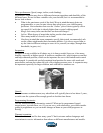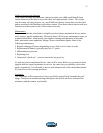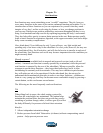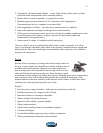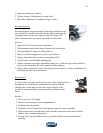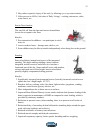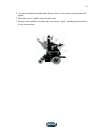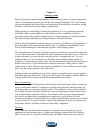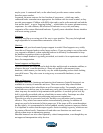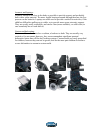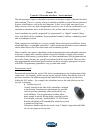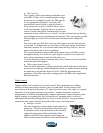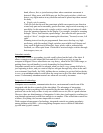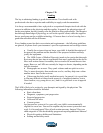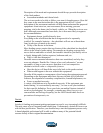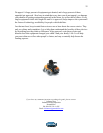
18
maybe years. A contoured back, on the other hand, provides more contact surface
therefore more comfort.
In general, the more contour, the less freedom of movement – which may make
contoured backs somewhat more appropriate for children with low trunk control, as they
provide more support. Children with SMA also tend to prefer softer materials on both the
seat and the back - to get a “hugging feeling” – which makes for a more pleasant sensory
experience. As with cushions, the selection of backrests is very wide, and many
companies offer custom fabricated backrests. Typically most wheelchair frames interface
with most seating systems.
Footrests:
Footrests can flip up or swing out of the way to ease transfers. They may be height and
angle adjustable to accommodate contractures of the foot.
Headrest:
For a user with poor head control proper support is needed. Head supports vary widely
from thin well targeted pads to softer larger surfaces. If you are going to use recline and a
very supportive headrest, a shear reducing backrest is definitely recommended to keep
the headrest in position relative to the head.
At least a simple headrest is typically prescribed, as it tends to be a requirement on school
buses for transportation.
Lateral supports and hipguides:
These accessories are often utilized to help the hips and the trunk to maintain midline, or
whatever the user’s comfort position is. Some are available with summer/winter
hardware, which means you can easily vary the width depending on how thick clothing
your child wears. They also come in swing-away or removable hardware, to ease
transfers.
Belts and harnesses:
Seat belts, chest belts, footstraps and anterior chest harnesses (butterfly harnesses) are
available in a variety of materials and sizes. These accessories help some children
maintain position in their wheelchairs as well as ensure safety. For example, a power
wheelchair user with low tone in the trunk may easily pitch forward at a sudden stop, so a
chest strap may be needed to help maintain trunk position. A seat belt (pelvic belt, lap
belt) is typically prescribed with any wheelchair to ensure safety. Footstraps are often
prescribed to help maintain foot positioning and prevent contractures.
These devices may be preventive and safe, but their over-utilization can be counter
effective. They restrict movement and are not aesthetically pleasing. In addition all
caregivers need to be instructed of their proper use. If the straps will be worn throughout
the day tightly, it is recommended to look at padded, stretchy options to improve comfort.
It is important to realize that the major negative factor in seating is gravity, which can not
be counter-effected easily. Sometimes tilt and other seat functions are much more
effective than straps in maintaining posture.
Shoulder harnesses are also often required by school transportation, even though they are
not approved transportation safety devices.



